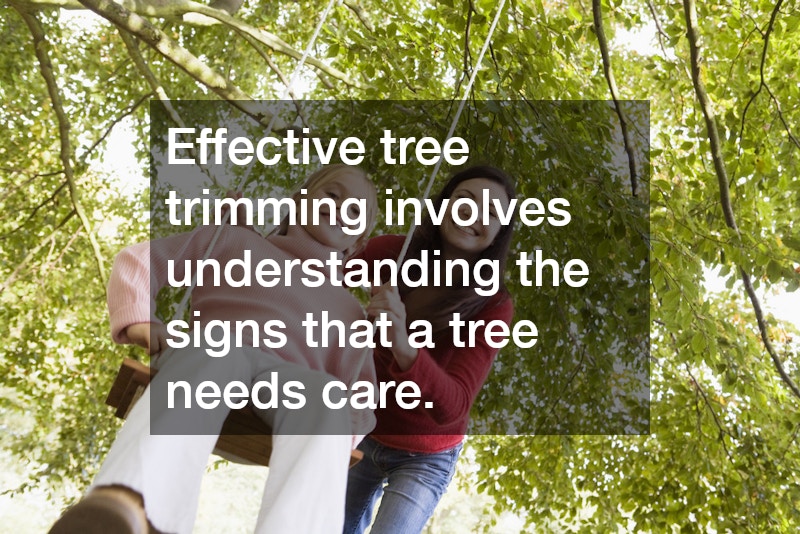Tree Trimming Tips: How to Determine if Your Tree Needs a Spruce
Understanding the importance of tree trimming is crucial for maintaining healthy and aesthetically pleasing landscapes. This article explores essential tips and addresses common questions regarding tree care and maintenance.
Signs Your Tree Needs Trimming
Overgrown Branches and Canopy
When branches grow excessively long and dense, they can become hazardous to people and property. Trimming helps manage the size and shape of the tree, ensuring both beauty and safety.
Fact: Overgrown branches can weigh heavily on a tree, leading to stress or even breakage.
Recognizing overgrowth involves looking for branches that extend beyond their ideal length or grow too close to structures like roofs and power lines. Cutting back overgrown branches not only promotes tree health but also prevents any potential damage to your property.
Keeping the canopy balanced ensures sunlight penetrates through to lower branches, promoting overall health. A well-managed canopy also improves air circulation within the tree, reducing the likelihood of diseases.
Dieback and Dead Branches
Dieback is a clear signal that a tree is struggling, and dead branches can pose significant safety risks. Identifying and removing these branches keeps the tree healthy and vibrant.
Signs of dieback include leaves that fail to flourish, particularly in certain sections of the tree or noticeably barren branches. Trimming away dead or diseased wood prevents decay from spreading, safeguarding the rest of the tree.
Regular inspection for dieback or dead branches helps in early detection and intervention, minimizing any adverse effects. This vigilance ensures the tree remains a focal point of beauty in your landscape.
Frequency of Tree Trimming
Seasonal Considerations
Knowing the best time of year to trim your trees can greatly affect their health outcomes. For instance, most deciduous trees benefit from trimming in their dormant season, typically winter.
Season-specific trimming can prevent unnecessary stress and encourage greater growth come spring. However, understanding the unique needs of each tree variety is crucial, as improper timing can lead to lasting damage.
Hardier trees may require different seasonal schedules, and you might need to adapt your approach depending on each tree’s unique responses to trimming. By aligning trimming with natural cycles, you optimize on health and vitality.
Growth Patterns and Species-Specific Needs
Different species of trees exhibit different growth patterns that should guide trimming schedules. Some fast-growing trees might require more frequent attention than slower-growing species.
Species like the sugar maple might demand less frequent trimming, while rapid growers like willows need regular cutting. Understanding these patterns helps implement a maintenance plan that suits each species.
Regular assessment of each tree’s growth can inform the frequency and intensity of trimming required to keep them robust. Respecting species-specific needs is crucial to foster healthy, flourishing trees.
DIY Trimming vs. Hiring a Professional
Assessing Safety and Skill Level
Before embarking on a DIY trimming project, consider if you possess the necessary tools and skills. Safety is paramount; lacking expertise can lead to injury or tree damage.
DIY trimming suits simple, smaller-scale tasks where branches are easily accessible. For larger trees or complex requirements, professional help can ensure safety and precision.
Weighing your skill level against the risk involved is key in deciding whether to handle the trimming yourself. Safety precautions can transform a risky task into a manageable endeavor.
Cost and Professional Expertise
Hiring a professional arborist might represent an initial expense, but their expertise often leads to long-term savings in tree health and structure. Pros equipped with experience and specialized tools ensure effective management.
In contrast, DIY trimming lowers short-term costs but could sacrifice accuracy and long-term tree health if not executed properly. Consider investing in professional services to maintain aesthetic and structural integrity.
Evaluating budget limits against the potential need for expert maintenance guides your decision on who should undertake the trimming task. The choice between DIY and professional services hinges on weighing costs against desired results.
Conclusion
Effective tree trimming involves understanding the signs that a tree needs care, knowing how often to perform maintenance, and deciding whether to seek professional help or undertake the task as a DIY project. Developing these insights ensures your trees remain healthy and your landscape stays beautiful.

